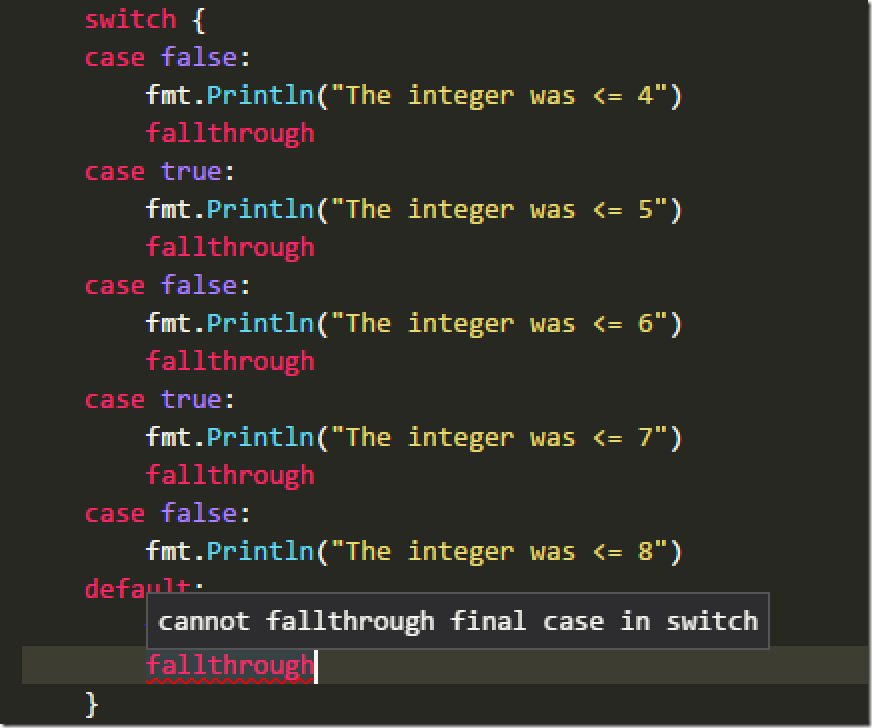go语言fallthrough的用法心得
fallthrough:Go里面switch默认相当于每个case最后带有break,匹配成功后不会自动向下执行其他case,而是跳出整个switch, 但是可以使用fallthrough强制执行后面的case代码。
示例程序1:
switch { case false: fmt.Println("The integer was <= 4") fallthrough case true: fmt.Println("The integer was <= 5") fallthrough case false: fmt.Println("The integer was <= 6") fallthrough case true: fmt.Println("The integer was <= 7") fallthrough case false: fmt.Println("The integer was <= 8") default: fmt.Println("default case") }
输出结果:
The integer was <= 5
The integer was <= 6
The integer was <= 7
The integer was <= 8
问题:是否在switch最后一个分支使用fallthrough???
有错误提示,显示:cannot fallthrough final case in switch
fallthrough不能用在switch的最后一个分支。
示例程序2:
上述示例是true、false常量进行分支判断,看如下变量示例。
s := "abcd" switch s[1] { case 'a': fmt.Println("The integer was <= 4") fallthrough case 'b': fmt.Println("The integer was <= 5") fallthrough case 'c': fmt.Println("The integer was <= 6") default: fmt.Println("default case") }
输出结果如下:
The integer was <= 5
The integer was <= 6
更改为:
s := "abcd" switch s[3] { case 'a': fmt.Println("The integer was <= 4") fallthrough case 'b': fmt.Println("The integer was <= 5") fallthrough case 'c': fmt.Println("The integer was <= 6") default: fmt.Println("default case") }
输出:
default case
总结:switch分支中使用变量进行判断的时,fallthrough正确的分支开始其作用。



 浙公网安备 33010602011771号
浙公网安备 33010602011771号